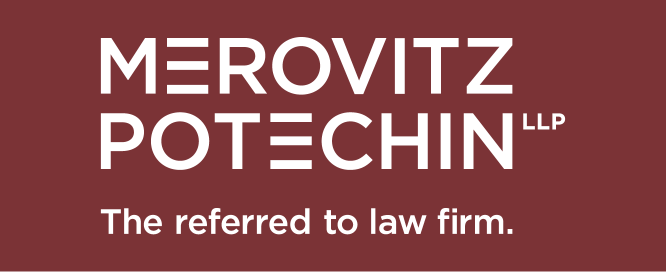NOTE – The information contained in the following blog post is no longer accurate. Further information will follow.
The following is an update to a blog posted on October 24, 2015: Franchisor’s Obligation to Disclose Lease Arrangements to Prospective Franchisees.
Pursuant to section 5(4)(c) of the Arthur Wishart Act (Franchise Disclosure), 2000, S.O. 2000 c. 3 (the “Wishart Act”), the franchise disclosure document that a franchisor provides to a prospective franchisee must contain “copies of all proposed franchise agreements and other agreements relating to the franchise to be signed by the prospective franchisee”. The lease (or a sublease or agreement to assign the lease, as the case may be) for the premises from which the franchise will operate is one such agreement that needs to be included in the disclosure document.
Even if the franchisor has entered into a lease directly with the landlord and, accordingly, the prospective franchisee is only expected to sign a sublease, the franchisor should provide a copy of the head lease to the franchisee as part of the disclosure document. The reason for the foregoing is two-fold. First, a sublease often stipulates that the franchisee is to pay the franchisor the rent that the head landlord charges the franchisor under the head lease. Section 6(1) of regulation promulgated under the Wishart Act, O. Reg. 581/00 (the “Wishart Regulation”) states that the disclosure document must include an estimate of the costs for leases necessary to establish a franchise, as well as any payment to the franchisor associated with the establishment of the franchise and required by the franchise agreement. Second, section 5(4)(a) of the Wishart Act requires the franchisor to disclose “all material facts”. Lease arrangements for the franchise location are material facts.
Franchisors often erroneously believe that they do not need to disclose lease arrangements if, at the time they provide the disclosure document to a prospective franchisee, a lease for the franchise location has not yet been executed. Recently, the Ontario Superior Court of Justice addressed this issue.
In 2337310 Ontario Inc. v. 2264145 Ontario Inc., 2014 ONSC 4370, the disclosure document provided by the franchisor to the franchisee in January 2012 did not contain the head lease or the sublease as there was no lease in existence with respect to the contemplated franchise premises at that time. In March 2012, the franchisor entered into a head lease for the franchise premises with the landlord. The franchise agreement was signed on September 5, 2012. Attached to the franchise agreement was a signed sublease with respect to the premises, pursuant to which the franchisee was required to pay the rent set out in the head lease. The head lease was not attached to the franchise agreement and has never been provided to the franchisee. As a result, the franchisee claimed that the disclosure was incomplete.
The court concluded that “the proposed sublease was an ‘agreement relating to the franchise to be signed by the prospective franchisee’, and it therefore was a document that should have been included in the Disclosure [Document]. Additionally, the cost of the lease was something that had to be disclosed pursuant to s. 6.1.ii of the Wishart Regulation.” Furthermore, the court held that “it is no answer for a franchisor to explain non-compliance on the basis that a document or information did not exist or was unavailable at the time the disclosure statement was prepared.”
While in that decision the court held that the Franchisor could have addressed the deficiency by providing to the prospective franchisee an updated disclosure document or a written statement of material change pursuant to section 5(5) of the Wishart Act once the head lease was signed and before the franchise agreement was signed, a more recent decision of the Ontario Superior Court of Justice casts doubt on such a solution.
In Raibex Canada Ltd. v ASWR Franchising Corp., 2016 ONSC 557, when the franchise agreement was signed in November 2012, the location of the franchised business had not yet been determined. The head lease was signed in September 2013 and the sublease was signed the following month. The franchisee opened for business in March 2014, once the construction on the franchised premises had been completed. Subsequently, the franchisee served a notice of rescission claiming, among other things, that the franchisor failed to meet its disclosure obligations by failing to provide a copy of the head lease in the disclosure document and disclose the substantial deposit under the head lease.
The court found that by failing to provide a copy of the Head Lease and disclose the associated financial costs, the franchisor failed to meet its disclosure obligations under the Wishart Act. The court held that the disclosure document was delivered prematurely, before the location of the franchised business was determined and before the franchisor was in a position to disclose all material facts. Finding the failure to provide a copy of the Head Lease and the associated financial costs an egregious violation of the disclosure requirements, rescission was granted to the franchisee.
In essence, the decision’s implication is that the practice of the provision of a disclosure document by a franchisor to a prospective franchisee before the franchise location is determined does not comply with the Wishart Act. Further, according to the decision in this case, all site-specific material facts, such as the terms of the head lease and development costs, must be known before a disclosure document can be provided and a franchise agreement can be signed.
A franchisor should consider the implications of the above-noted decisions when preparing its disclosure document, especially if the location of the franchise to be granted is yet to be selected or if the head lease is yet to be signed.
For more information, please contact Marina Abrosimov at 613-563-6684 or by email at [email protected]







